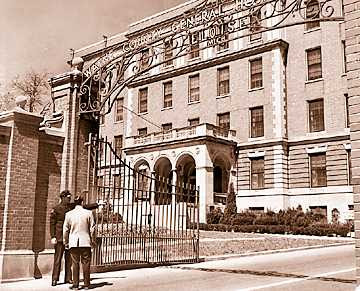If you grew up in Detroit in the 1950s through the 1970s, chances are you remember Big Time Wrestling (BTW) on WXYZ--Channel 7 which aired on Saturdays at 3:30 pm until 4:30 pm with announcer Fred Wolfe. BTW captured the rough and tumble world of Detroit's blue collar angst. Detroit wrestling fans had a strong work ethic, respect for fair play, and a hatred for dirty tactics and cheating. They particularly loved grudge matches, loser leaves town matches, and wars of attrition which could last twenty minutes or more. BTW wrestlers were not pretty boys from the West Coast or elite snobs from the East Coast--they were blue collar heroes who had to work for a living.
 |
| Dick, the Bruiser |
 |
| Leaping Larry Chene (not Shane) |
Chene (Arthur Lawrence Beauchene) was tragically killed at the age of thirty-five in an early morning car accident on October 2, 1964 while returning home to Michigan from a match in Davenport, Iowa the previous night. Leaping Larry Chene was a credit to his profession and sorely missed by his fans.
That same year, Edward Farhat and his father-in-law bought the BTW television rights and secured exclusive rights to promote wrestling events at Cobo Arena for a mere $50,000. Edward Farhat, better known as The Sheik, was the most hated wrestler in Detroit. Farhat's character usually came out dressed in a robe and an Arab headress. He wore wrestling shoes with exaggerated pointed toes and had a camel printed on his wrestling shorts. The Sheik was the focus of Detroit's frustration with the Middle Eastern oil crisis, and The Sheik did everything he could but set a Ford Pinto on fire in the middle of the squared circle to incite the crowd against him.
 |
| Rocky Johnson is Dwayne "The Rock" Johnson's father. |
 |
| The Sheik with his manager Dave Burzynski. |
Under Farhat's leadership, BTW matches suddenly became edgier and bloodier with ethnic overtones. In the 1970s and 1980s, Detroit faced the oil crisis and stiff competition from foreign competitors. Farhat imported Japanese wrestlers like Kenuke Honda and Toyota Matahashi to exploit this economic reality.
The Japanese tag team worked their way up the ranks until they won the BTW title belt by throwing Sumo salt into the eyes of their opponents--shades of The Sheik's fire ball move. Then, in front of rabid Detroit fans, the Japanese wrestlers destroyed the officially sanctioned title belt and replaced it with one made in Japan. They bragged their belt was better quality and less expensive. Those were fighting words in Detroit and the new champions were led out of the arena under police protection and left the country with the belt--as the narrative went. In professional wrestling, the line between reality and fantasy gets blurred, and if you can get the crowd fired up, that's money in the bank.
When the national economy went belly up in 1980, BTW could no longer draw big crowds to fill Cobo Arena or other big venues in the Midwest. The advent of cable TV and two national wrestling federations--one out of Stamford, Connecticut and the other out of Atlanta, Georgia--helped spell the death knell for regional promotions. Professional wrestling went dark in Detroit.
Alex Karris meets Dick, the Bruiser at Lindell's AC sports bar: https://fornology.blogspot.com/2017/02/alex-karras-and-dick-bruisers-detroit.html
The Japanese tag team worked their way up the ranks until they won the BTW title belt by throwing Sumo salt into the eyes of their opponents--shades of The Sheik's fire ball move. Then, in front of rabid Detroit fans, the Japanese wrestlers destroyed the officially sanctioned title belt and replaced it with one made in Japan. They bragged their belt was better quality and less expensive. Those were fighting words in Detroit and the new champions were led out of the arena under police protection and left the country with the belt--as the narrative went. In professional wrestling, the line between reality and fantasy gets blurred, and if you can get the crowd fired up, that's money in the bank.
 |
| The Camel Clutch |
Alex Karris meets Dick, the Bruiser at Lindell's AC sports bar: https://fornology.blogspot.com/2017/02/alex-karras-and-dick-bruisers-detroit.html











